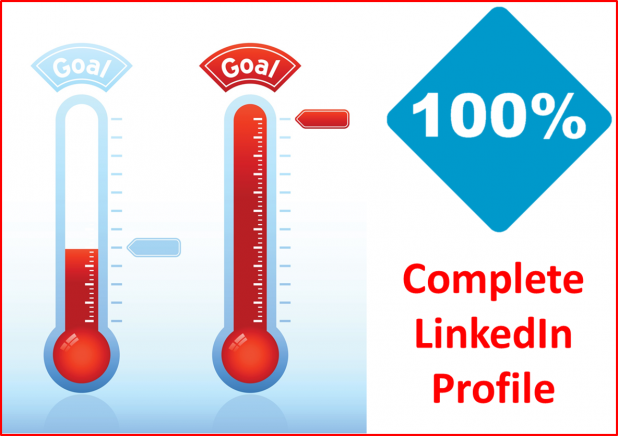Never has the internet, mobile, and social media had such an impact on how your business interacts with your user community as it does now. Be it Facebook, Twitter, LinkedIn, any of these platforms can catapult your business to the next level. But the question is, how? With the following post, I intend to multi-fold: understand technologies that are generating the most digital ‘noise in corporate digitization efforts across the globe.
How to get exposure for your business on LinkedIn?
LinkedIn company pages enable you to get noticed in your new field. It does provide additional value to your audience at the same time, offering them the chance to engage with your business, effectively establishing your credibility as a trusted resource. According to several statistics, 94% of recruiters use LinkedIn to find candidates. In fact, some research has found up to 97% of recruiters use LinkedIn. Despite being a heavy recruiting and hiring manager presence, the platform only comprises 36% of job seekers on LinkedIn. As a result, this disparity leaves you, the new developer, with a huge advantage.
Since its inception in 2003, the platform has been identified with the business community and job seekers day in day out. The only challenge is to find ways to differentiate it from online career websites. Unfortunately, many users viewed it as a glorified monster.com or indeed.com and didn’t see the potential until recently.
It may quite interest you to know that LinkedIn as a platform has seen unparalleled growth where its product developers have been working hard to keep new features coming fast and furious. Of course, some people certainly talk about work on Facebook fan pages and Twitter, but LinkedIn has a grip on the business community and makes great sense for all types of industries and businesses.
LinkedIn Profile Tips for Web Development Companies
1. Get your profile to 100%

Image Source
Make a complete LinkedIn profile that scores 100%. An “all-star” profile is 40 times more likely to receive opportunities through LinkedIn. Have you ever wondered why? It’s simply because a completed profile ranks higher in the internal algorithm, which means you’re more likely to be discovered. For instance, Like Google’s search engine, LinkedIn relies on an algorithm when displaying search results.
Now what is an all-star LinkedIn profile comprised of:
- Profile picture
- Location and industry
- Experience (a current position, with a brief description, plus two previous positions)
- Skills (at least three)
- Education
- At least 50 connections
LinkedIn makes it easy to reach a 100% completed profile by giving hints and recommendations along the way.
2. Keywords are really important

Much like SEO, keywords matter a lot on LinkedIn because of the aforementioned internal search algorithm that hiring managers and recruiters use to source talent. To make sure the algorithm sends the right people your way, specify your preferred areas of work expertise, be it a particular language or framework such as Python, Ruby on Rails, Angular.js, Sass, WordPress, etc.
Here’s what I mean:
Let’s say you previously have worked as a social media manager but do not want a career that relates to social media. Seems quite tricky, doesn’t it? Make sure to limit keywords relating to social media across your profile (in the summary, experience, skills, and so on). Consider removing them altogether. Otherwise, recruiters looking for social media candidates rather than web developers may contact you.
3. Use the Summary section

What if I say that your summary section is the only place for you to write on LinkedIn freely? So, make the most of it! Come up with something inspirational and motivational, not in the direct sense by using the word frequently, but by showing examples of how you are motivated. For instance, “After discovering my passion for web development, I couldn’t get enough. I made websites for friends and family, interned with local business, and hired myself out as a freelancer.
I’m looking forward to bringing that passion to a full-time role.”
In addition to this, try including your preferred technologies and languages. Talk like a person – explain what you do in detail, sound natural, and use relevant keywords, but make sure you don’t go overboard. Linked In’s algorithm can tell when you’re trying to game the system.
4. Call-To-action

Always include a call-to-action (CTA). Every business wants its end users to be prompted to find out more about you. And, adding a call-to-action in the summary section simply acts like a cherry on the cake. For instance,
- Feel free to contact me directly at name@example.com.
- Why don’t you check out some of my design samples at somethingsomethin.com?
It is mainly done to get people who want to find out more about you to click or even reach out.
5. Get involved in LinkedIn groups for more LinkedIn Tips and Tricks
As a business, the smartest move is to take advantage of all LinkedIn groups that might help you to connect well with your customers. LinkedIn even allows you and your business to network with other people in your field, especially those outside your immediate connections.
Be very careful here and make sure you do not blast advertisements in groups; this channel is best used to share content that will encourage higher engagement and quality interactions. By sharing relevant content, you can also drive more visitors to your website.
Lastly, I would say making an effective presence on LinkedIn as a platform is one silhouette that I can’t seem to get enough of right now.
Dave Johansson is the Senior Business Analyst at Tatvasoft Australia, a web development company in Australia. His aim is to sharpen his analytical skills, deepening his data understanding and broaden his business knowledge in these years of his career. He loves to write about technology innovation and emergence.
The post Business Entities: It’s Time to Highlight Your Presence with Your LinkedIn Page appeared first on SiteProNews.






